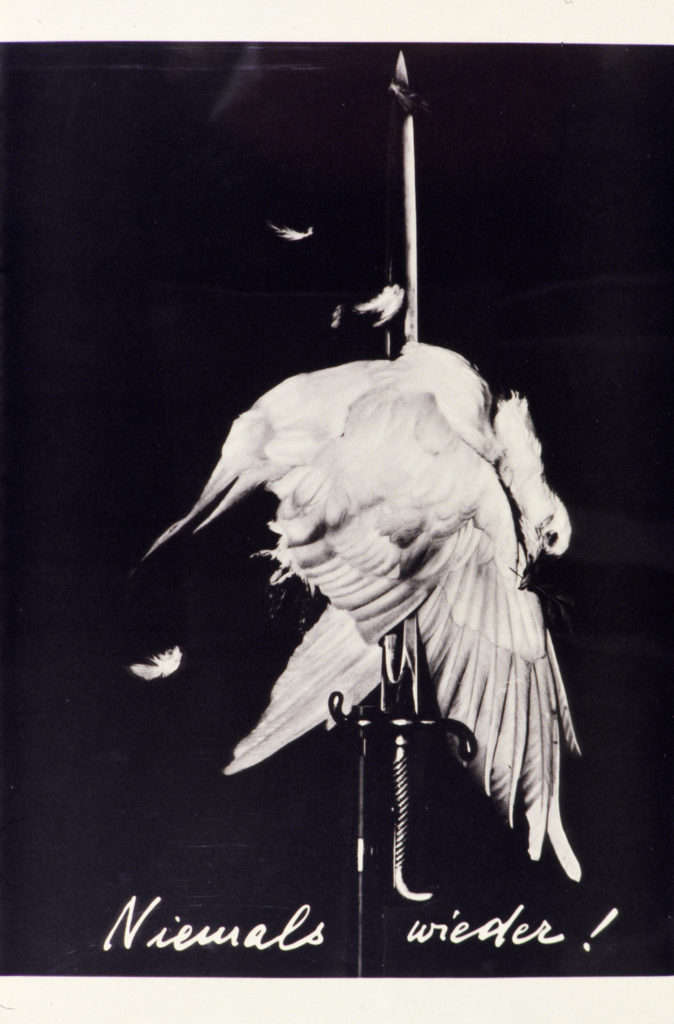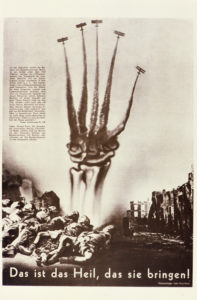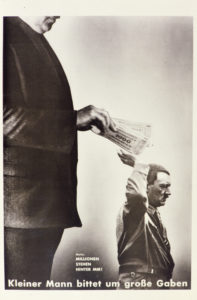ORGANISER New Zealand Art Gallery Directors Council OTHER VENUES Baycourt Arts Centre, Tauranga, 26 November 1986–11 January 1987; Rotorua Art Gallery, 23 January–22 February 1987; Sarjeant Gallery, Whanganui, 4 March–12 April 1987; Manawatu Art Gallery, Palmerston North, 22 April–7 June 1987; Forrester Gallery, Oamaru, 13 August–13 September 1987; Dunedin Public Art Gallery, 23 September–1 November 1987; Govett-Brewster Art Gallery, New Plymouth, 20 January–28 February 1988; Artspace, Auckland, 21 March–29 April 1988
John Heartfield invents political photomontage.
Born Helmut Herzfeld, in Berlin, in 1891, he works as a commercial artist until the outbreak of World War I. After this Heartfield's politicisation is rapid. In 1916, outraged by anti-British sentiment and the nationalistic slogan ‘Gott strafe England’ (May God punish England), he anglicises his name. In 1918, he joins the German Communist Party and the Berlin Club Dada. In 1917, with his brother Weiland, he founds the publishing house, Malik-Verlag, for whom he will produce numerous book covers.
In 1924, on the tenth anniversary of World War I, he shows his first photomontage, After Ten Years: Fathers and Sons, in the window of Malik-Verlag. In it, a line of skeletons parade behind an imperial general. Heartfield used photographic images and text to distort popular nationalist sayings of the day. From 1930 onwards, he contributed weekly to the left-wing workers’ daily Arbeiter Illustrierte Zeitung (AIZ).
In his works for AIZ, Heartfield 's satirical photomontages expose the abuses of power in the Nazi regime. In one montage, he depicts himself slicing the head off Zörgiebel, Berlin’s SPD police chief, under the caption, ‘Use photography as a weapon.’ Blood and Iron depicts a swastika of axes dripping blood in a critique of Nazism. It refers to Otto von Bismarck’s famous quote: ‘The great questions of the day will not be settled by means of speeches and majority decisions but by iron and blood.’
Forced to flee Germany after Hitler comes to power, Heartfield continues to create work for AIZ while in exile. Spending the war years in England, in 1950 he returns to what is then East Germany. He dies in East Berlin in 1968, leaving an extensive archive.
This touring exhibition features thirty-three photomontages from the 1920s and the 1930s, many originally produced for AIZ. The press release for the show ends, ‘as a commentary on fascism and war-mongering propaganda, these works are in Heartfield's words, “unfortunately still timely”.’

























